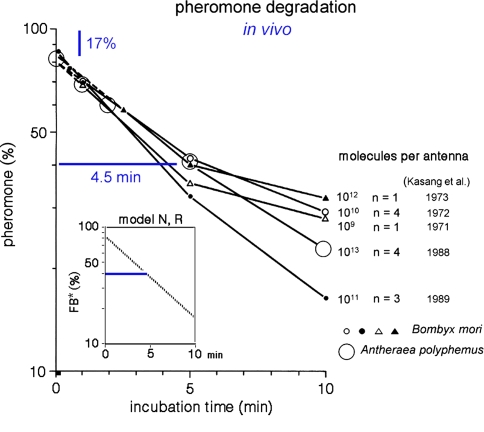Fig. 15.
Biphasic enzymatic pheromone degradation in vivo. Groups of freshly excised antennae of Bombyx mori and Antheraea polyphemus were exposed for 10 s to airborne stimuli with 3H-labeled pheromone, at uptakes eliciting half-maximal to maximal responses. The largest load of 1012 stimulus molecules per antenna of Bombyx mori and 1013 in A. polyphemus was obtained at an uptake of about 100 μM/s. After incubation for 1 s and 10 min the antennae were dropped into organic solvent. The eluted radioactive material was analysed by thin-layer chromatography. Ordinate: percentage eluted radioactivity with intact pheromone. Each data point was obtained with n = 1 to n = 4 groups of 10–100 antennae per group. Data from Kasang (1971, 1973), Kasang and Kaissling (1972), and Kasang et al. (1988, 1989b). Inset Plotted is the model time-course of FB* (pheromone bound to B*) as percentage of total pheromone adsorbed at an uptake of 1 μM/s for 10 s. After adjusting k11 = k9/20,000 the time course of FB* reflects the biphasic decrease of intact pheromone on living antennae measured experimentally

